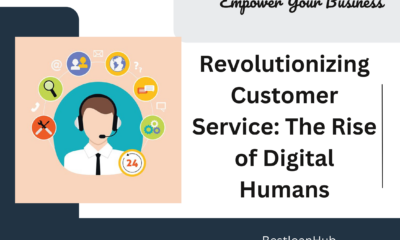Business Guides
Evaluating the Economic Impact of Carbon Capture and Storage: Costs, Benefits, and Market Potential

This article discusses the economic impact of Carbon Capture and Storage (CCS). It covers costs, benefits, and market potential, providing a detailed evaluation of how CCS affects businesses and economies. We also include FAQs to address additional questions.
What Is Carbon Capture and Storage (CCS)?
Carbon Capture and Storage (CCS) refers to technologies designed to capture and store carbon dioxide (CO2) emissions, preventing them from entering the atmosphere. CCS is becoming increasingly significant in efforts to combat climate change, and its adoption is critical to meeting global carbon reduction targets.
In a typical CCS process, CO2 is captured from sources such as power plants and industrial sites. The captured carbon is then transported, usually via pipelines, to storage sites where it is deposited underground in geological formations. CCS technologies can also be integrated into various industries to reduce their carbon footprint effectively.

How Much Does Carbon Capture and Storage Cost?
The cost of implementing CCS technologies varies greatly depending on several factors, including the technology used, the size of the operation, and the location. Generally, the cost can be broken down into three main components: capture, transportation, and storage. Capture is often the most expensive part of the process. It includes the installation and maintenance of capture equipment and is estimated to cost between $60 to $120 per ton of CO2 captured.
Transportation costs are influenced by the distance the CO2 needs to travel and the mode of transport. Pipeline transport is the most common and cost-effective, especially over long distances. Storage costs depend on the geological nature of the storage site and its distance from the CO2 source. These costs generally range from $10 to $20 per ton of CO2 stored.
What Are the Benefits of Carbon Capture and Storage?
One of the primary benefits of CCS is its potential to significantly reduce greenhouse gas emissions. By capturing CO2 before it enters the atmosphere, CCS can help mitigate climate change and reduce the negative impacts associated with global warming.
In addition to environmental benefits, CCS offers economic advantages. For industries that are heavy emitters of CO2, CCS can provide a solution to comply with regulatory requirements and avoid penalties. It can also create new business opportunities and jobs in the fields of engineering, construction, and maintenance, contributing positively to the economy.
What is the Market Potential of Carbon Capture and Storage?
The market potential for CCS is substantial, given the increasing global emphasis on reducing carbon emissions and mitigating climate change. The International Energy Agency (IEA) projects that to meet the Paris Agreement targets, approximately 9% of global emissions reductions by 2050 will need to come from CCS.
Various sectors such as power generation, cement production, and chemical manufacturing are prime candidates for CCS implementations. Additionally, the development of carbon markets and trading systems further enhances the economic viability of CCS, offering financial incentives for companies that adopt these technologies.
Are There Any Economic Risks Involved?
While CCS provides numerous benefits, it also carries certain economic risks. High upfront costs and ongoing operational expenses can be burdensome for some companies. Additionally, the availability of suitable storage sites and the costs associated with transporting captured CO2 can be limiting factors.
There is also the risk of evolving regulations and market dynamics which can impact the profitability and feasibility of CCS projects. Companies must carefully assess these risks to determine if CCS is a viable solution for their specific circumstances.
How Does Carbon Capture and Storage Impact Businesses?
For businesses, adopting CCS technologies can provide a competitive edge by positioning them as leaders in sustainability and environmental responsibility. It can also attract investment and funding opportunities focused on green technologies and innovation.
However, companies must weigh the financial and operational impacts. The costs associated with implementing and maintaining CCS systems can be substantial. Businesses need to conduct thorough cost-benefit analyses to ensure that the long-term benefits outweigh the initial investments and operational expenses.
What is the Future Outlook for Carbon Capture and Storage?
The future outlook for CCS appears promising, especially with increasing international commitments to reducing carbon emissions. Advances in technology are expected to lower costs and improve efficiency, making CCS a more viable option for a broader range of industries.
Supportive policies, government funding, and private investments are also likely to play crucial roles in the widespread adoption of CCS. As more businesses and industries recognize the importance of reducing their carbon footprint, the demand for CCS technologies is expected to grow significantly.

Conclusion
Evaluating the economic impact of Carbon Capture and Storage involves understanding the costs, benefits, and potential risks associated with these technologies. While the initial costs can be high, the long-term environmental and economic benefits make CCS an essential tool in combating climate change and reducing CO2 emissions.
Businesses must consider both the financial implications and the potential for market opportunities. By staying informed about advancements in CCS technology and regulatory changes, companies can make strategic decisions that benefit both their operations and the broader environment. As the world continues to prioritize sustainability, the role of CCS in achieving carbon reduction goals is likely to become increasingly significant.
FAQs
Q: How do carbon markets support the adoption of CCS?
A: Carbon markets provide financial incentives for companies to reduce or capture their emissions. By trading carbon credits, companies that implement CCS can gain financial benefits, making the adoption of these technologies more economically viable.
Q: What are some examples of industries that can benefit the most from CCS?
A: Industries such as power generation, cement production, steel manufacturing, and chemical processing are significant emitters of CO2 and can benefit greatly from the implementation of CCS technologies to reduce their carbon footprint and comply with regulations.
Business Guides
Revolutionizing Customer Service: The Rise of Digital Humans

In this article, we discuss how digital humans are transforming the customer service industry. We’ll explore what digital humans are, how they work, their benefits, challenges, and the future implications for businesses and consumers.
What are Digital Humans?
Digital humans are advanced avatars or computer-generated characters that can interact with people in real-time through text, speech, and even visual cues. They are designed to look and behave like real humans, providing a more natural interaction compared to traditional automated systems.
These digital entities are powered by artificial intelligence (AI) and machine learning, enabling them to understand and respond to queries in a human-like manner. They can handle a wide range of customer service tasks, from answering common questions to providing personalized recommendations.
How Do Digital Humans Work?
Digital humans rely on sophisticated AI algorithms to interpret and respond to customer inquiries. They use natural language processing (NLP) to understand text or voice input and generate appropriate responses. Additionally, they may incorporate computer vision to recognize and respond to facial expressions and gestures.
This technology is often integrated with customer databases and other enterprise systems, allowing digital humans to access relevant information quickly. Their responses can be fine-tuned over time using machine learning, which enables them to become more accurate and helpful with each interaction.
What are the Benefits of Digital Humans in Customer Service?
One of the main benefits of digital humans is their ability to provide 24/7 customer support. Unlike human agents, they don’t require breaks or shifts, ensuring that customer queries are addressed promptly at any time of day or night.
Digital humans can also enhance customer experiences by delivering personalized interactions. They can remember past interactions, preferences, and purchase history, making each encounter more relevant and engaging. Additionally, they can handle multiple customers simultaneously, improving efficiency and reducing wait times.
Are There Any Challenges in Using Digital Humans?
Despite the many benefits, there are also challenges associated with deploying digital humans in customer service. One significant challenge is ensuring that these digital entities can accurately understand and respond to diverse customer needs and inquiries, which requires extensive training and fine-tuning of AI models.
Another challenge is the initial cost of developing and implementing digital human technology. Businesses need to invest in AI research, custom software, and seamless integration with existing systems. There is also the risk of technical issues or downtime, which can disrupt customer service operations and impact overall customer satisfaction.
How Are Businesses Adapting to Digital Humans in Customer Service?
Many businesses are gradually adopting digital humans as part of their customer service strategy. They often start with a hybrid approach, combining human agents and digital humans to manage different types of inquiries. This allows companies to benefit from the advantages of digital humans while maintaining the human touch for more complex issues.
Businesses are also investing in continuous improvement of their digital human systems. This includes regular updates, data analysis, and customer feedback to enhance the capabilities and effectiveness of digital humans. By doing so, they aim to provide a seamless and satisfying customer experience.
What Is the Future of Digital Humans in Customer Service?
The future of digital humans in customer service looks promising. As AI and machine learning technologies continue to evolve, digital humans are expected to become even more sophisticated and human-like in their interactions. This will likely result in higher customer satisfaction and more efficient service delivery.
In addition, advancements in augmented reality (AR) and virtual reality (VR) could further enhance the capabilities of digital humans. Imagine customer service representatives appearing as lifelike holograms for face-to-face interactions, providing a highly immersive and engaging experience. These developments could revolutionize the way businesses interact with their customers.
What Are the Ethical Considerations of Using Digital Humans?
The rise of digital humans also raises ethical considerations. One important issue is transparency. Customers should be informed when they are interacting with a digital human rather than a real human agent. This honesty builds trust and avoids confusion or frustration.
Another ethical concern is data privacy. Digital humans rely on large amounts of personal data to function effectively, which raises questions about how this data is collected, stored, and used. Businesses must ensure they adhere to data protection regulations and prioritize customer privacy at all times.
Conclusion
Digital humans are clearly revolutionizing customer service by providing around-the-clock support, personalized interactions, and efficient handling of customer inquiries. While there are challenges and ethical considerations to address, the potential benefits make digital humans an exciting innovation for the future of customer service.
Businesses that embrace this technology and continuously refine their digital human systems stand to gain a competitive advantage in delivering outstanding customer experiences. As digital humans continue to evolve, the possibilities for enhancing customer satisfaction and operational efficiency are limitless.
FAQs
What industries can benefit the most from digital humans?
Industries with high customer service demands, such as retail, banking, healthcare, and telecommunications, can benefit significantly from digital humans. These industries often require 24/7 support and personalized interactions, making digital humans a valuable asset in meeting customer needs.
Could digital humans replace human agents entirely?
While digital humans offer many advantages, they are unlikely to replace human agents entirely. Human agents are still essential for handling complex, sensitive, or nuanced inquiries that require a human touch. Instead, digital humans and human agents are more likely to work together, complementing each other’s strengths to provide the best possible customer service.
Business Guides
Revolutionizing IP Protection: How Blockchain Technology is Transforming Intellectual Property Rights

In this article, we delve into how blockchain technology is revolutionizing the way intellectual property (IP) rights are protected, providing more security, transparency, and efficiency.
What is Blockchain Technology?
Blockchain technology is a decentralized digital ledger that records transactions across many computers. Transactions are recorded in blocks and each new block is linked to the previous one, forming a chain. This technology is secure, transparent, and virtually tamper-proof.
It gained popularity through cryptocurrencies like Bitcoin, but its uses extend far beyond. The blockchain’s ability to offer secure, transparent, and immutable records makes it applicable to various industries, including intellectual property protection.
How Does Blockchain Enhance IP Protection?
In the context of IP, blockchain can provide a secure and transparent way to register and protect creations. Traditional IP protection methods are often cumbersome and susceptible to fraud. Blockchain can eliminate these issues by offering a more robust framework.
For instance, once an intellectual property is registered on the blockchain, its ownership and transaction history can be traced without the risk of being altered. Such a system ensures that creators receive proper recognition and compensation for their works.
Can Blockchain Solve Issues of IP Theft and Misuse?
IP theft and misuse are common issues in the digital age. Blockchain can act as a deterrent by providing immutable proof of ownership and timestamps. This makes it challenging for anyone to falsely claim ownership or misuse someone else’s intellectual property.
Moreover, smart contracts—self-executing contracts with the terms directly written into code—can automate IP enforcement. For instance, a smart contract can automatically issue royalties to the IP owner whenever the IP is used, reducing the chances of misuse or under-reporting royalties.
Are There Any Legal or Regulatory Challenges?
While blockchain offers immense potential, it’s not without challenges. One significant hurdle is the lack of a standardized legal and regulatory framework. Different jurisdictions have varying laws regarding IP and blockchain technology, making it challenging to implement a universal solution.
However, efforts are underway to develop international standards that accommodate blockchain in IP protection. Governments, international bodies, and industry stakeholders are working to create regulations that support the growth and adoption of this technology.
How Can Businesses Implement Blockchain for IP Protection?
Adopting blockchain for IP protection involves several steps. First, businesses need to identify which intellectual properties they want to protect. Then, they can choose a blockchain platform that suits their needs, such as Ethereum, Hyperledger, or another specialized service.
After selecting a platform, businesses can register their intellectual properties on the blockchain. They may also want to develop or adopt smart contracts to manage licensing, royalties, and other IP-related transactions. Consulting with experts in blockchain technology and IP law can facilitate the implementation process.
What Industries Benefit the Most from Blockchain-Based IP Protection?
Multiple industries can benefit from blockchain-based IP protection, but some stand out more than others. The entertainment industry, which includes music, film, and publishing, can gain significantly from this technology. Blockchain can help ensure that creators are fairly compensated and that their works are not used without permission.
Other sectors like software development, pharmaceutical, and fashion also see the advantages. For instance, software companies can track the usage and licensing of their programs more efficiently, while pharmaceutical companies can protect patents for new drugs. The fashion industry can safeguard designs against counterfeit products.

What is the Future of Blockchain in IP Protection?
The future looks promising for blockchain in IP protection. As more industries recognize its benefits, adoption rates are likely to increase. Ongoing advancements in technology and regulatory frameworks will further pave the way for broader implementation.
Innovations such as decentralized autonomous organizations (DAOs) and more sophisticated smart contracts are set to make the IP protection process even more streamlined and secure. As businesses continue to explore this technology, blockchain is poised to become a cornerstone in the realm of intellectual property rights.
Conclusion
In summary, blockchain technology offers a revolutionary approach to protecting intellectual property. Its features of security, transparency, and immutability make it an ideal solution for modern IP challenges. While there are some hurdles to overcome, the advantages far outweigh the drawbacks. As we move forward, blockchain is set to transform the landscape of IP rights, ensuring more robust protection for creators and businesses.
FAQs
Can small businesses afford to implement blockchain for IP protection?
Yes, small businesses can also adopt blockchain technology for IP protection. There are many blockchain platforms available that offer affordable solutions, and businesses can scale their implementation based on their specific needs. Additionally, the long-term benefits such as reduced risk of IP theft and simplified licensing can offset initial costs.
Is blockchain technology complicated to understand and implement?
While blockchain technology can be complex, there are numerous resources and experts available to help businesses implement it effectively. Many blockchain platforms offer user-friendly interfaces and comprehensive guides. Partnering with blockchain consultants can also simplify the process, making it accessible even to those without a technical background.
Business Guides
Envisioning Tomorrow: The Impact of Speculative Design on Future Business Strategies

In this article, we will explore how speculative design shapes future business strategies. We’ll cover its benefits, challenges, examples, and why businesses should embrace this forward-thinking approach.
What is Speculative Design and How Does It Apply to Business?
Speculative design is a design practice that aims to imagine and speculate about future possibilities and scenarios. It isn’t about predicting the future, but rather, exploring various potential futures to spark discussion and innovation. In business, speculative design helps companies contemplate the impacts of emerging trends, technologies, and societal changes, enabling them to strategize more effectively.
By leveraging speculative design, businesses can create visionary ideas that drive growth and transformation. This approach empowers companies to think beyond conventional boundaries, challenging traditional business models and paving the way for disruptive innovations. Ultimately, speculative design allows businesses to stay ahead of the curve, adapt to changes swiftly, and maintain a competitive edge.
How Can Speculative Design Benefit Future Business Strategies?
The benefits of incorporating speculative design into business strategies are manifold. Firstly, it encourages a long-term perspective. Businesses often get entangled in short-term goals and objectives. Speculative design pushes companies to look far into the future, thus fostering sustainability and long-term planning.
Secondly, it drives innovation by allowing businesses to experiment with new ideas and concepts without the need for immediate practical implementation. This can lead to groundbreaking products, services, and business models. Lastly, speculative design can help businesses better understand and prepare for potential risks and uncertainties, ultimately leading to more resilient and adaptable organizations.
What Are the Challenges of Implementing Speculative Design in Business?
Despite its many advantages, there are challenges to incorporating speculative design into business strategies. One of the main hurdles is the uncertainty of speculative scenarios. Since speculative design deals with possible futures that may never materialize, it can sometimes be challenging to get buy-in from stakeholders who prefer more concrete outcomes.
Additionally, there is the risk of creating too many abstract or far-fetched ideas that aren’t actionable. To overcome this, businesses need to balance visionary thinking with practical execution. This requires a well-structured process that can take speculative ideas from concept to reality while ensuring that they align with business goals and market needs.
Are There Real-Life Examples of Businesses Using Speculative Design?
Yes, numerous businesses have successfully employed speculative design to future-proof their strategies. For example, technology companies like Google and Microsoft often engage in speculative design to explore future applications of artificial intelligence and other emerging technologies.
Similarly, consumer goods companies like IKEA use speculative design to envision the future of living spaces, thereby influencing their product development and innovation pipelines. By anticipating future needs and trends, these companies stay ahead of the competition and continually innovate to meet evolving consumer demands.
Why Should Businesses Embrace Speculative Design?
Embracing speculative design allows businesses to stay proactive rather than reactive. By exploring multiple future scenarios, companies can better prepare for different possibilities and reduce the element of surprise. This proactive stance enhances their ability to adapt and thrive amidst changing market conditions.
Furthermore, speculative design fosters a culture of creativity and innovation. It encourages employees to think outside the box and explore ideas without the immediate pressure of feasibility or profitability. This can lead to a treasure trove of innovative concepts that, even if not immediately implementable, can serve as inspiration for future projects and solutions.
How Can Businesses Start Integrating Speculative Design?
To integrate speculative design into their strategies, businesses can start by developing a dedicated think tank or innovation team responsible for exploring future scenarios. These teams should consist of diverse skill sets, including designers, technologists, and business strategists, to ensure a holistic approach.
Engaging in workshops, conferences, and collaborative projects can also help businesses gain insights into speculative design methods. Additionally, fostering partnerships with academic institutions, design studios, and think tanks can provide fresh perspectives and new ideas. By encouraging a culture of continuous learning and experimentation, businesses can effectively integrate speculative design into their strategic planning processes.
What are the Key Considerations for Successful Speculative Design in Business?
For successful speculative design, businesses should focus on clarity of vision and purpose. They need to clearly define their goals and the potential futures they wish to explore. This ensures that speculative efforts are aligned with the company’s overall strategy and objectives.
It’s also crucial to foster open communication and collaboration across all levels of the organization. Keeping stakeholders informed and involved is key to garnering support and ensuring that speculative ideas are taken seriously. Lastly, incorporating iterative feedback and adapting speculative models based on real-world data and insights can help refine future scenarios and make them more actionable.
Conclusion
Incorporating speculative design into business strategies offers companies a powerful tool to envision and prepare for the future. While it presents certain challenges, the benefits of fostering innovation, long-term thinking, and resilience far outweigh the risks. By proactively exploring potential futures and staying adaptable, businesses can position themselves for sustainable success in an ever-evolving marketplace.
FAQs
Q: Can speculative design be combined with other innovation methodologies?
A: Yes, speculative design can complement other innovation approaches like Design Thinking, Agile, and Lean methodologies. By combining these strategies, businesses can create a comprehensive, forward-thinking innovation toolkit that addresses both immediate and long-term goals.
Q: Is speculative design suitable for small businesses and startups?
A: Absolutely. While often associated with larger corporations, speculative design can provide significant value to small businesses and startups by helping them anticipate future trends, differentiate themselves in the marketplace, and develop innovative offerings that meet emerging customer needs.
-

 Business Guides9 months ago
Business Guides9 months agoRevolutionizing Customer Service: The Rise of Digital Humans
-

 Business Guides9 months ago
Business Guides9 months agoEnvisioning Tomorrow: The Impact of Speculative Design on Future Business Strategies
-

 Business Guides9 months ago
Business Guides9 months agoFrom Petroleum to Plants: How Plant-Based Plastics are Transforming Packaging
-

 Business Guides9 months ago
Business Guides9 months agoRevolutionizing IP Protection: How Blockchain Technology is Transforming Intellectual Property Rights
-

 Business Guides9 months ago
Business Guides9 months agoThe Future is Here: How AI Companions Are Revolutionizing Customer Engagement
-

 Business Guides9 months ago
Business Guides9 months agoTransforming Commerce: How the Metaverse is Redefining Business Models
-

 Business Guides9 months ago
Business Guides9 months agoUnlocking Potential: Business Opportunities in the Circular Economy
-

 Business Guides9 months ago
Business Guides9 months agoBrushstrokes in Boardrooms: How Art Shapes Corporate Culture

























